Published Alex Hodgson on February 26, 2018
Gin Terpenes Analysis by GC-VUV
Normally I start these things off with some bad puns or facetious hyperbole, but today we’re discussing a serious topic. Now there are some people out there who will try to tell you that gin is disgusting because it “tastes like Christmas trees”. If you’re one of those people, I’m here to tell you that you, sir or madam, are wrong. (Also, who doesn’t like Christmas??) Gins can contain some of the most diverse flavor profiles to a discerning palate, and in Part 4 of Better Living Through (Flavor) Chemistry, we’ll use GC-VUV to explore what makes a good gin.
By definition, gins are required to have juniper as their predominant flavor; after that, anything is fair game. With hundreds (or even thousands) of botanicals from which to choose and several methods of producing gin (pot distillation, column distillation, and compounding being the three basic styles), the combinations of flavors are essentially limitless. That’s not including the synergistic and antagonistic effects certain flavor molecules have with one another. Thus, getting the correct flavor profile of a gin can mean the difference between an appealing flavor and an unpleasant one. (If you want a slightly more thorough introduction on gin, check out Nina Notman’s article in Chemistry World.)
We analyzed 3 styles of gin distilled in 3 geographical regions: an American contemporary gin from Texas, a London dry gin from southern England, and a Schwarzwald dry gin from the Black Forest region of Germany. Apart from being distilled in different regions, where ingredient type can differ widely, the number of ingredients also varies greatly. The American contemporary and London dry only have 6 and 10 total ingredients, respectively, whereas the Schwarzwald dry has a whopping 47 ingredients! Some of the more exotic botanicals listed in the Schwarzwald (though some ingredients are still proprietary) include acacia flowers, wild celery, and marshmallow (the plant, not the confectionary). For this particular analysis, we used SPME over headspace as the sampling method in order to better concentrate terpenes, as gin flavors are more subtle than the odor of essential oils (as highlighted in Part 3).
Looking at the chromatographic overlay, we can clearly see this ingredient difference (Figure 1). The American seems to only have a couple major peaks, and whereas the London and Schwarzwald have similar profiles, for the most part the Schwarzwald has higher response of major peaks. This is even more impressive given that the sample volume of the Schwarzwald (200 μL) was half of both the London and American (400 μL).
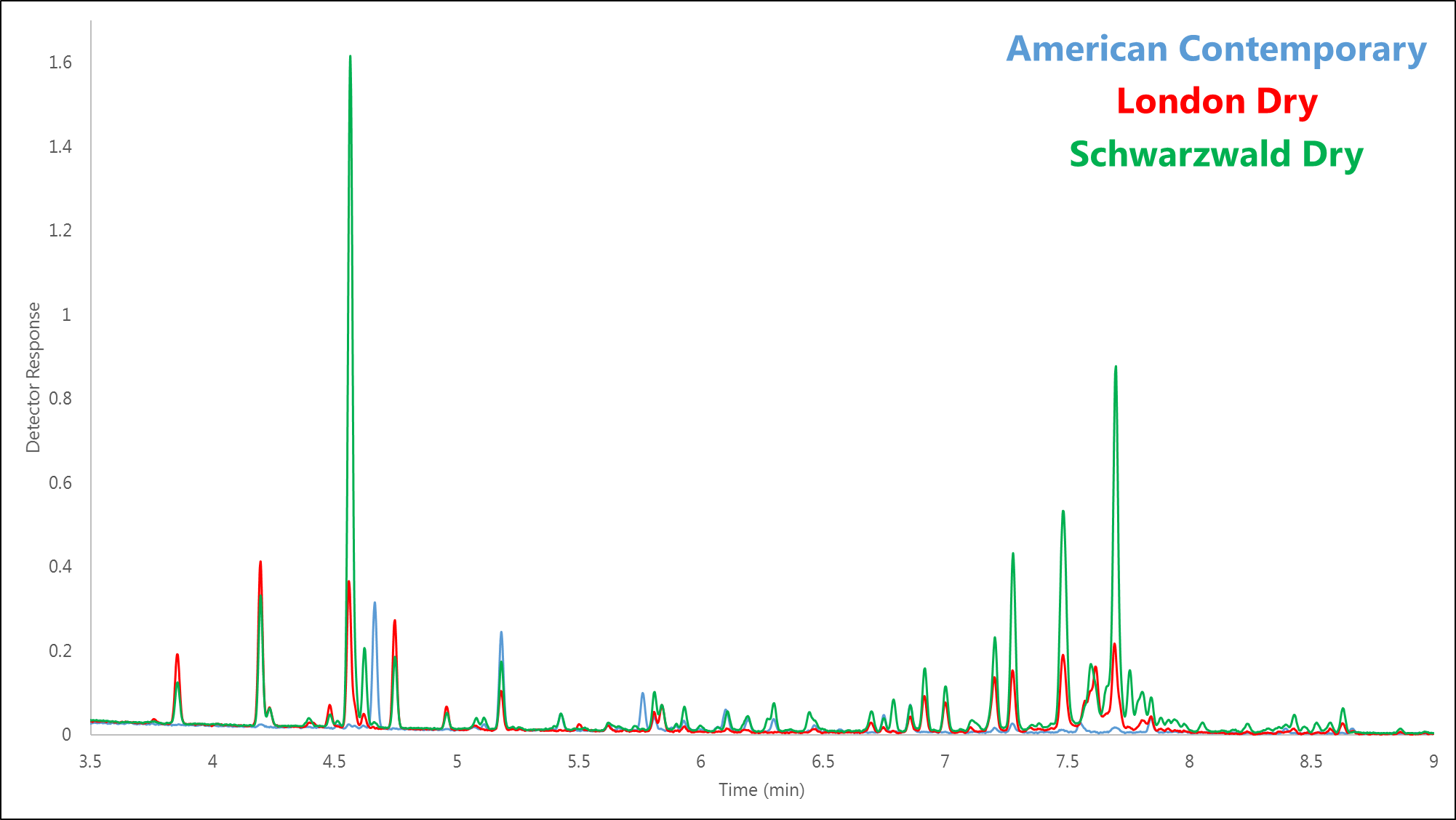
Figure 1. A chromatographic overlay of the 3 gins. You can easily see the Schwarzwald dry has the largest and most diverse terpene profile, or “flavor profile”, of the 3.
Focusing on the first half of the chromatogram (Figure 2), we can make a few interesting observations. First, the biggest peak by far is the limonene/p-cymene coelution (though the overwhelming majority of that coelution is limonene). This makes sense when we look at the ingredient lists of the London and Schwarzwald, which both contain citrusy elements like coriander seeds, lemon peel, and orange. However, even though the American ingredient list includes lemongrass and grapefruit peel, hardly any limonene was detected; these ingredients may be used in such low concentrations as to not contribute in a significant way. Second, the only real peaks of interest for the American contemporary are eucalyptol and linalool, which are likely from the more floral infused elements like rosemary and lavender. Nosing this gin, the rosemary is by far the most recognizable odor, and the data supports this observation. Finally, the relatively low levels of α- and β-pinene across all three samples are surprising, given that the primary flavor should be from the juniper berries which are high in both terpenes. However, a lower pinene concentration likely leads to a less “Christmas tree” bite on the front or back end while tasting, creating a smoother gin.
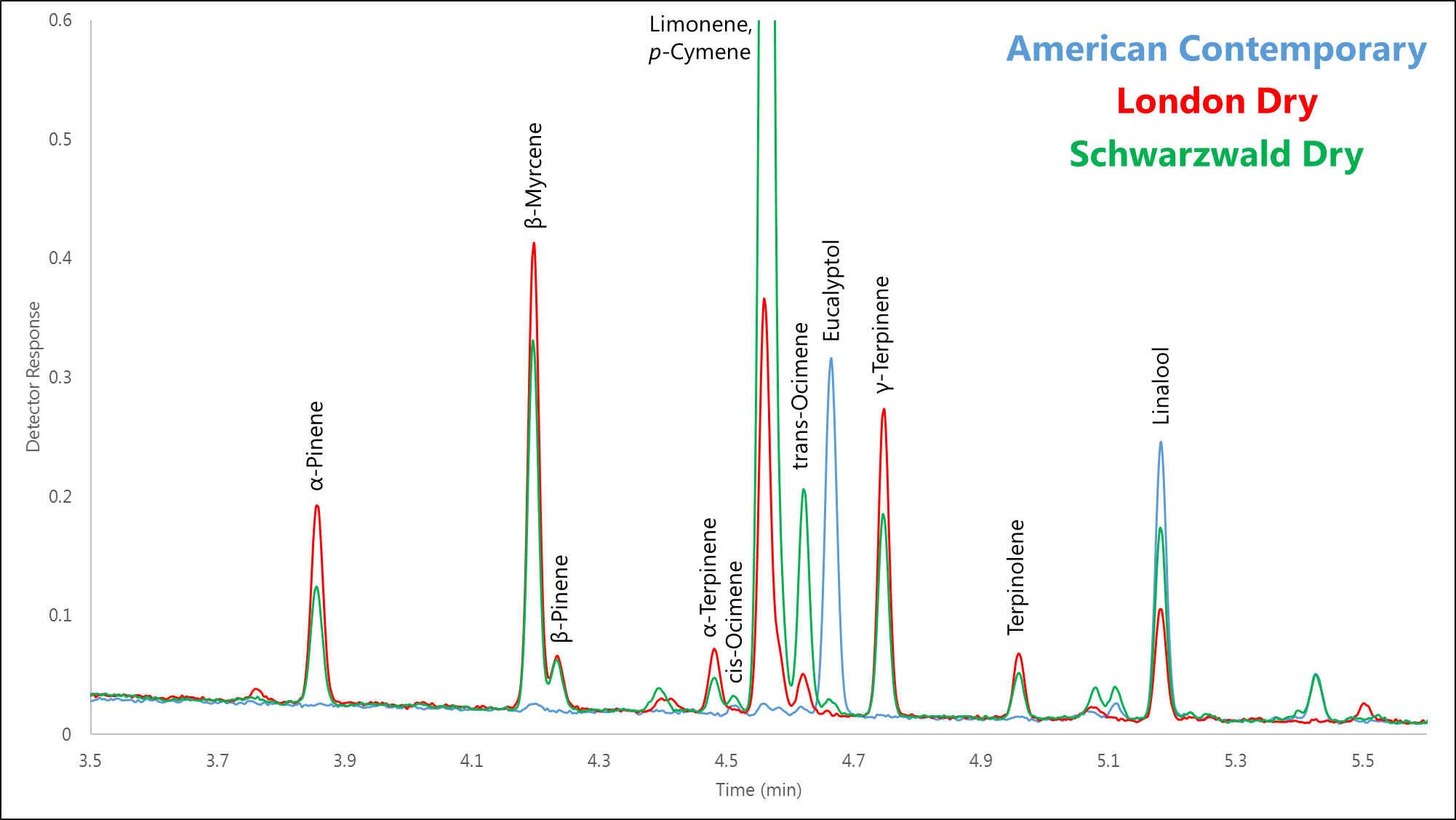
Figure 2. In the front half of the overlay, we can identify individual terpenes using spectral library matching, as well as deconvolving co-eluting peaks (as I talk about in Part 1 and Part 2).
The back half of the chromatogram is a little murkier, as we have quite a few unidentified peaks (Figure 3). This isn’t unexpected in this region of the chromatogram since it contains some heavier and less volatile compounds like esters or more heavily substituted terpenes not currently in the spectral library. Again, the ingredient disparity is apparent, specifically with the two main terpenes in this region, α-humulene and β-caryophyllene. These two terpenes are found in a variety of botanicals such as conifers and citrus fruits. With more of these types of ingredients in the Schwarzwald than the London, and almost none in the American, the resulting responses agree.
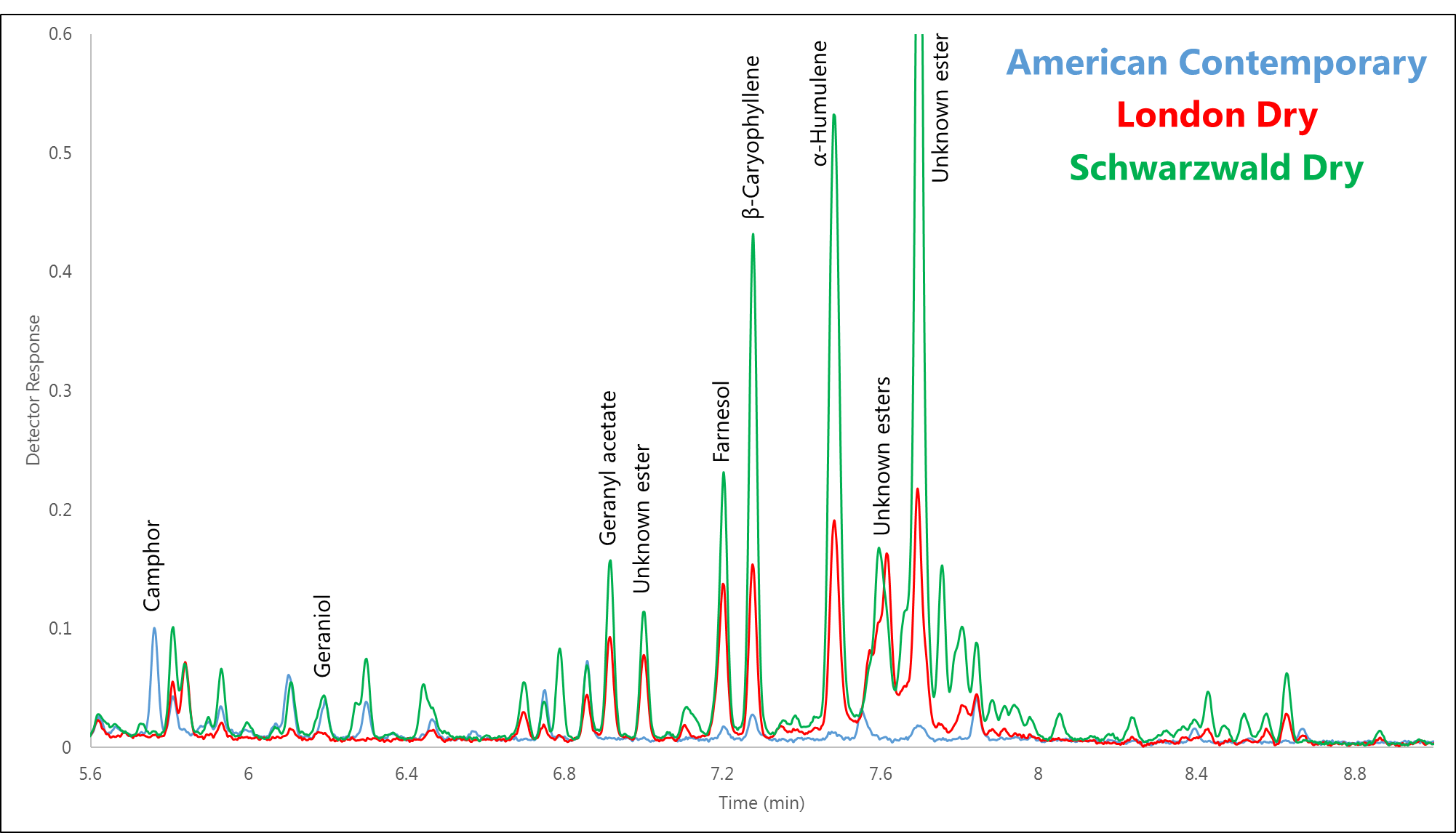
Figure 3. The back half of the overlay shows 2 terpenes of interest (β-caryophyllene and α-humulene), amid a mix of heavier unidentified esters and terpenoids.
Overall, I expected higher terpene responses from all these gins, as gin is an aromatic liquor. Perhaps there are less volatile flavor molecules that contribute significantly to the hallmark flavor of gin. Still, we can see that the swath and intensity of terpenes in a gin reflects its quality, as well as the price. The Schwarzwald is one of the highest quality and most expensive gins on the market, and from a chromatography standpoint we can easily see why.
While almost all distilleries perform quality control the old-fashioned way – that is, with their noses and taste buds – some larger producers like Bombay Sapphire do use gas chromatography to map a “flavor profile” of their gins and compare it to a standard chromatogram. This ensures their current gin batch doesn’t deviate too far from the expected recipe. Using GC-VUV, not only could a distiller map a full flavor profile but also identify individual or combinations of terpenes that contribute to a desirable (or detrimental) flavor. The VGA-100 is another tool available in the pursuit of making the perfect gin. Side note: if you want to thank me for being the inspiration in making the perfect gin, feel free to send a few bottles my way! 😁
Next time we’ll foray into a budding industry with an analysis of cannabis terpenes!


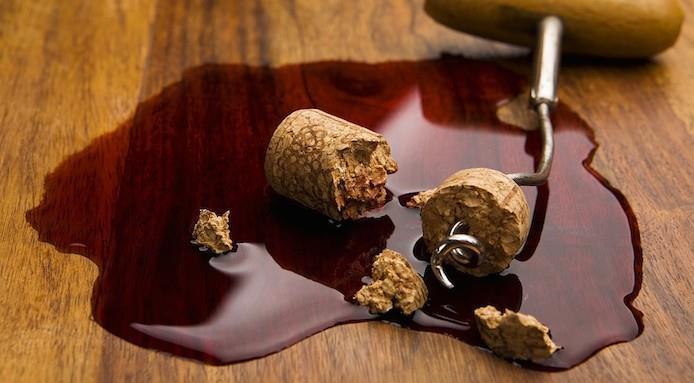
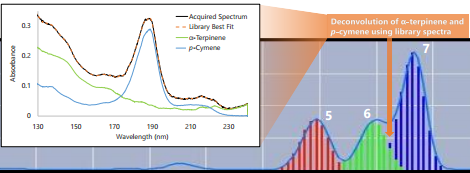






how have these terpenes ended up in the gin?